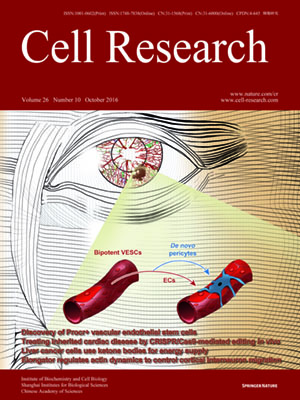
Volume 26, No 10, Oct 2016
ISSN: 1001-0602
EISSN: 1748-7838 2018
impact factor 17.848*
(Clarivate Analytics, 2019)
Volume 26 Issue 10, October 2016: 1131-1148
ORIGINAL ARTICLES
Elongator controls cortical interneuron migration by regulating actomyosin dynamics
Sylvia Tielens1,2,*, Sandra Huysseune1,2,*, Juliette D Godin1,2, Alain Chariot2,3,4, Brigitte Malgrange1,2 and Laurent Nguyen1,2
1GIGA-Neurosciences, 4000 Liège, Belgium
2Interdisciplinary Cluster for Applied Genoproteomics (GIGA-R), 4000 Liège, Belgium
3GIGA-Molecular Biology of Diseases, 4000 Liège, Belgium
4Walloon Excellence in Lifesciences and Biotechnology (WELBIO), University of Liège, CHU Sart Tilman, 4000 Liège, Belgium
Correspondence: Laurent Nguyen,(lnguyen@ulg.ac.be)
The migration of cortical interneurons is a fundamental process for the establishment of cortical connectivity and its impairment underlies several neurological disorders. During development, these neurons are born in the ganglionic eminences and they migrate tangentially to populate the cortical layers. This process relies on various morphological changes that are driven by dynamic cytoskeleton remodelings. By coupling time lapse imaging with molecular analyses, we show that the Elongator complex controls cortical interneuron migration in mouse embryos by regulating nucleokinesis and branching dynamics. At the molecular level, Elongator fine-tunes actomyosin forces by regulating the distribution and turnover of actin microfilaments during cell migration. Thus, we demonstrate that Elongator cell-autonomously promotes cortical interneuron migration by controlling actin cytoskeletal dynamics.
10.1038/cr.2016.112
FULL TEXT | PDF
Browse 1916


